Adresse
304, rue Cardinal Nord
Centre Dorchester, MA 02124
Heures de travail
Du lundi au vendredi : 7h - 19h
Week-end : 10h - 17h
Adresse
304, rue Cardinal Nord
Centre Dorchester, MA 02124
Heures de travail
Du lundi au vendredi : 7h - 19h
Week-end : 10h - 17h

Plus qu’un simple lieu de repos pour les patients, le lit métallique d’hôpital est un équipement médical sophistiqué.
Bienvenue sur mon blog !
Avant de plonger dans le contenu, j'aimerais que vous me rejoigniez sur mes plateformes de médias sociaux où je partage plus d'informations, interagis avec la communauté et publie des mises à jour. Voici comment vous pouvez me contacter :
Facebook :https://www.facebook.com/profile.php?id=100071234835011
LinkedIn :https://www.linkedin.com/company/74943205/admin/dashboard/
YouTube :www.youtube.com/@shandongexpertmedicalequip4695
TikTok :www.tiktok.com/@expertmedical
Commençons maintenant notre voyage ensemble. J'espère que vous trouverez le contenu ici instructif, engageant et utile.
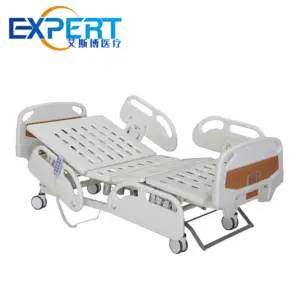
Dans l'environnement exigeant d'un établissement de santé, chaque équipement joue un rôle essentiel dans les soins et le rétablissement des patients. Parmi ceux-ci, le lit métallique hospitalier s'impose comme un élément fondamental. Plus qu'un simple lieu de repos pour les patients, le lit métallique hospitalier est un équipement médical sophistiqué conçu pour offrir confort, soutien et faciliter les soins. Ce guide complet explore les caractéristiques, les avantages et les considérations essentielles concernant les lits métalliques hospitaliers, soulignant pourquoi ils sont un élément indispensable des soins de santé modernes. Nous explorerons divers aspects de ces équipements. lit d'hôpital en métal, de sa construction et de ses fonctionnalités à son impact sur les résultats des patients et l'efficacité opérationnelle.
La durabilité et la fonctionnalité d'un lit d'hôpital Leur construction robuste leur confère une grande résistance. Généralement fabriqués en acier ou en aluminium de haute qualité, ces lits sont conçus pour résister à une utilisation constante et à un nettoyage rigoureux.
Cette construction durable garantit que le lit d’hôpital peut résister aux rigueurs quotidiennes d’un environnement hospitalier.
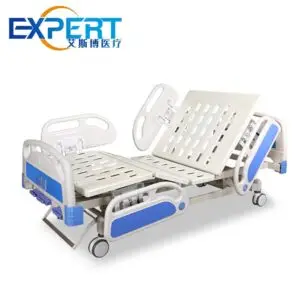
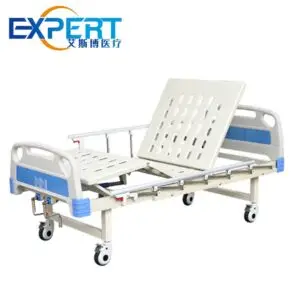
Les lits d’hôpitaux métalliques modernes sont équipés d’une gamme de fonctionnalités conçues pour améliorer les soins aux patients et l’efficacité du personnel soignant :
Ces caractéristiques contribuent de manière significative à la polyvalence et à la praticité du lit d’hôpital dans un établissement de soins de santé.
L'utilisation de lits d'hôpital en métal offre de nombreux avantages tant pour les patients que pour les prestataires de soins :
Ces avantages soulignent l’importance d’investir dans des produits de haute qualité. lits d'hôpitaux.

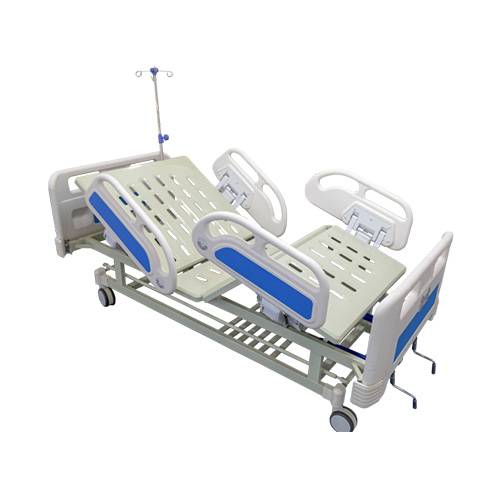
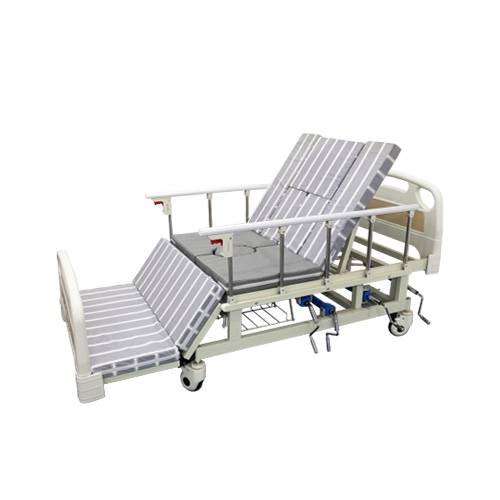






Bien que les fonctionnalités de base restent similaires, il existe des variations dans lits d'hôpital en métal pour répondre à des besoins spécifiques :
Choisir le bon type de lit d'hôpital dépend des besoins spécifiques de l’établissement de santé et de sa population de patients.
Le choix du lit d’hôpital approprié nécessite un examen attentif de plusieurs facteurs :
En tenant compte de ces facteurs, les établissements de santé peuvent prendre des décisions éclairées lors de l’achat lits d'hôpital en métal.
Voici un tableau récapitulatif des principales caractéristiques des différents types de lits d'hôpital métalliques. Ce tableau évite les comparaisons entre marques et se concentre sur des catégories générales.
| Caractéristique | Lit manuel | Lit électrique | Lit bariatrique | Lit bas |
|---|---|---|---|---|
| Ajustement | Manuel (manivelles/leviers) | Électrique (commandes à bouton-poussoir) | Électrique (commandes à bouton-poussoir) | Électrique (commandes à bouton-poussoir) |
| Positionnement | Postes limités | Large gamme de positions (Fowler's, Trendelenburg) | Large gamme de positions, renforcées pour un poids plus élevé | Large gamme de positions, hauteur plus basse |
| Capacité de poids | Standard | Standard | Capacité de poids supérieure | Standard |
| Mobilité | roulettes | roulettes | Roulettes robustes | roulettes |
| Avantage principal | Rentable | Commodité, facilité d'utilisation | Convient aux patients plus grands | Réduit le risque de chute |
| Application typique | Cadres de soins de base, budgets limités | La plupart des milieux hospitaliers | Unités de soins bariatriques | Soins gériatriques, patients à haut risque de chutes |
Ce tableau fournit un aperçu utile pour comprendre les différences entre les différents lits métalliques d’hôpitaux.
Un entretien approprié est essentiel pour assurer la longévité et la fonctionnalité de lits d'hôpitauxUn nettoyage et une désinfection réguliers sont essentiels pour maintenir l'hygiène et prévenir la propagation des infections. Des inspections régulières doivent être effectuées pour identifier tout signe d'usure ou de dommage. La lubrification des pièces mobiles et le serrage des composants desserrés peuvent contribuer à prévenir les dysfonctionnements et à prolonger la durée de vie des lits. Le respect des instructions du fabricant en matière de nettoyage et d'entretien est essentiel pour préserver l'intégrité du lit métallique d'hôpital.
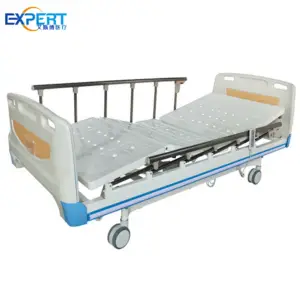
La conception et la technologie de lits d'hôpitaux Continuer à évoluer. Les avancées futures pourraient inclure :
Ces avancées promettent de renforcer encore le rôle du lit d’hôpital dans la prestation de soins de santé de qualité.
Lits d'hôpital en métal Les fauteuils roulants sont bien plus que de simples meubles ; ce sont des outils essentiels dans les soins de santé modernes. Leur construction robuste, leurs fonctionnalités avancées et leurs nombreux avantages contribuent significativement au confort des patients, à la sécurité et à l'efficacité des soignants. Comprendre les différents types, caractéristiques et critères de choix lits d'hôpital en métalLes établissements de santé peuvent prendre des décisions éclairées qui, à terme, améliorent la qualité des soins prodigués. Investir dans la qualité lits d'hôpital en métal est un investissement dans de meilleurs résultats pour les patients et un environnement de soins de santé plus efficace. lit d'hôpital en métal demeure une pierre angulaire d’une prestation efficace des soins de santé.
Q : Quelle est la durée de vie moyenne d'un lit d'hôpital en métal?
A : Avec un entretien approprié, un lit d'hôpital en métal peut durer de nombreuses années, généralement 10 à 15 ans ou plus.
Q : À quelle fréquence les lits métalliques des hôpitaux doivent-ils être nettoyés ?
UN: Lits d'hôpital en métal doivent être nettoyés et désinfectés régulièrement, idéalement après chaque utilisation par un patient et selon les besoins.
Q : Quelles sont les principales caractéristiques de sécurité à rechercher dans un lit d'hôpital en métal?
R : Les principales caractéristiques de sécurité comprennent des barrières latérales, une construction robuste et le respect des normes de sécurité en vigueur.
Q : Les lits d’hôpital électriques sont-ils plus chers que les lits manuels ?
R : Oui, électrique lits d'hôpital en métal Ils sont généralement plus chers que les lits manuels en raison de la technologie et des fonctionnalités supplémentaires. Cependant, leur commodité et leurs avantages supplémentaires justifient souvent l'investissement.